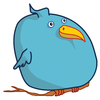Krita 3.0 turns into a 2D animation tool
|
Krita [1] was originally developed as a universal image editor for Linux and came as part of the Calligra [2] office suite. Over the course of time, the developers concentrated more and more on the painting and illustrator functions in the application. As a result, Krita has begun to target mostly comic book illustrators and illustrators in general rather than photographers.
The release of Krita 3.0 at the end of May marked the beginning of an another important chapter in the application's history. This release comes with an animation function, as well as an improved layer dock. In addition, the grid tool and the alignment function have been redone. This has opened Krita up to a wider circle of creatives including cartoonists and game developers.
What's New
Krita 3.0 contains a multitude of smaller and larger improvements. In order to quicken the pace of work on the project, the developers sought funding through a Kickstarter campaign [3] (see also the "Krita 2016 Kickstarter" box). The team set two goals for itself. The first was to reduce the compute time for drawing operations, thereby accelerating the rate of display. The second goal was to address the wish list of the crowd-funding supporters and create animations. The developers achieved both goals and then went even further and created other improvements.
[...]
Buy this article as PDF
Pages: 6
(incl. VAT)





